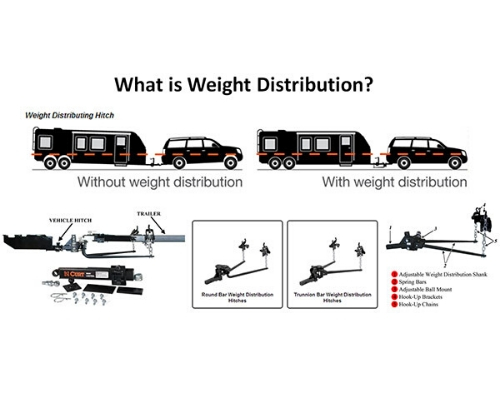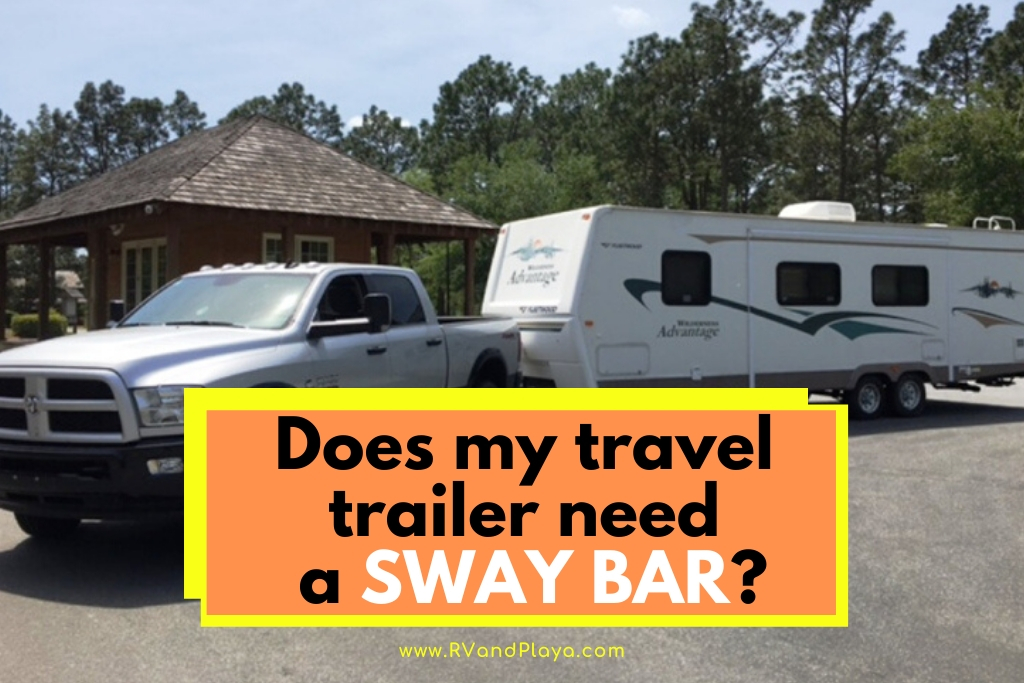Adding a travel trailer to the back of any vehicle definitely raises some safety questions. Specifically, if you should have a sway bar or not, to prevent dangerous rollovers. For first time drivers, it can be confusing to know what safety precautions you should be taking since there’s a lot of information to absorb. Let me be the one to break it down for you in the simplest terms.
Does your travel trailer need a sway bar? It can depend on a number of factors like:
- Route Traveled
- Environment
- Weight
Despite a lot of regular drivers arguing for a sway bar, there is a lot of debate against the need for one too.
Regardless of what side of the fence you fall on, it’s important to consider the factors of your trip and the type of travel trailer you plan on towing. Furthermore, consider the vehicle you are using for towing the travel trailer as that can also have an impact on whether your vehicles are leaning a little too hard. Let’s go over some of these aspects.
Table of Contents
When to use a sway bar
There’s probably nothing scarier than losing control going at a faster speed like the highway or taking a turn because your trailer is causing your car to move rather than the other way around. A sway bar adds the control element back to the equation.
Sway when towing an RV? Watch this! >> Check out the video below
Consider some of the examples listed below in determining whether you do or do not need a sway bar in order to control your travel trailer.
1. Your Route
Probably one of the most important factors to consider when traveling with a trailer in tow is what route you are about to take to your destination. There are a few conditions and environmental factors in which you want to have a sway bar on your side.
A) Windy Roads: While it’s tough to predict weather conditions like storms, certain parts of the country are more prone to heavy winds. If you are on the highway traveling through open space in the desert and large gusts of winds come along, there’s a good chance your vehicle will struggle to keep the heavyweight in the back aligned.
B) Winding Roads: Tight turns are another opportunity for body rolls and pushing the weight to the outside tire. Typically, mountainous drives have curves and bends on small roads. This is particularly dangerous when losing control of your trailer because of the mountain itself and oncoming traffic, as it’s usually one-lane each way.
2. Your Vehicle
Knowing what your vehicle is capable of is also really important. A truck that is more meant for towing than possibly a ford will better handle a difficult situation. If you are towing an additional trailer off of an RV, then the front end of the horse and wagon becomes the heavier object.
The downside to a sway bar
Because sway bars are trying to help you gain control of your car and your travel trailer, you can expect a lot more rigidness to your driving. Despite not being able to go wrong with having a sway bar, it can still be an extra investment if you don’t really need one.
Short drives through small towns where there aren’t any major highways or winding roads at faster speeds may be a reason to reconsider getting a sway bar. Having said that, most times, travel trailers are for being able to move around your home at any time.
Comfort Issues
Many experienced trailer travelers report that your driving can lose a lot of comfort when adding a rigid sway bar. For instance, if you hit a massive pothole on one side, expect it to hurt. The ideal is to take out some of that bounciness that could result in a lack of control. But the opposite side of that is the same effect as a body roll with the weight on the tire that is not hitting the pothole.
Additional Costs
A sway bar and its links are not something that you want to be cheap on if you need one. While they are the most expensive parts to your car or trailer, they still can add up to a couple hundred. The initial cost may not be bad, but the labor to replace them sometimes can add up depending on where you go. Though infrequent, depending on how much stress you put on your sway bar and it’s parts, replacing them is just as important as not having one at all.
Wear and Tear
Let’s revisit the comfort when someone hits a pothole, but their car has a good suspension system. The bounce back is what eases the blow. When we think of commercials like Jeeps that are off-roading, we can imagine the car splashing into the water and bouncing up easily. That car is meant to take that on.
But if we think of a race car hitting a pothole, it definitely hurts as it’s low to the ground and really uses the leverage of all the tires on the ground. Sports cars have sway bars. In an effort to tow more weight comfortably, adding a sway bar can also do some damage to your car as it blocks your suspension.
Driving with a little caution can go a long way.
Weight Distribution Systems
As previously mentioned, doing your research and getting a soundproof sway bar is important. No one wants to waste money to find out the sway bar they chose was ineffective and possibly dangerous.
Nowadays, when it comes to towing a travel trailer, a lot of people opt for an all-in-one deal getting a weight-distribution hitch. This tool includes sway bars in its system to help with the anti-roll effect.

Having said that to save you some time, here are some of the best options in a few different weight classes.
| BRAND | PROS | CONS |
|---|---|---|
| EAZ LIFT 48069 1200 LBS ELITE KIT | Known for its power and durability is backed up with a five-year warranty. | If this is your first rodeo installing you might want to recruit someone with experience as there’s no manual |
| PRO SERIES 49903 COMPLETE WEIGHT DISTRIBUTION KIT | The preinstalled and torqued sway bar makes setting up easy for beginners. | The tongue weight is 1000, which is 200 less than the EAZ LIFT model. This can be limiting in adding weight to your trailer. |
| FASTWAY E2 2-POINT SWAYC CONTROL ROUND BAR HITCH | Stated in the name, well-rounded as it comes in all tongue weights needed. | Unfortunately, the hitch ball is sold separately and is another additional cost. |
If you aren’t wanting to take the step and get the whole system, it’s best to call an auto shop for recommended specs with your vehicle and sway bar specifics.
Final Thoughts
in order of importance and safety, it’s first recommended to get the weight distribution hitch that offers the sway anti-roll safety component and making sure the weight of the trailer isn’t affecting one side more than the other.
If you aren’t for doing the whole system, then a sway bar with its links will do just fine and is a precautionary step you will never be sorry for. While a lot of drivers say you don’t know if you need one until you gain some speed on the highway, this isn’t the type of thing you want to do some trial and error type of experiment.
If you’re really against either, then head back to the reasons you may need one and confirm you aren’t falling into those categories.
Recommended reading
Do Travel Trailers Need Alignments? What You Must Know
Do Travel Trailers have Back-Up or Reverse Lights? (Is It Legal?)
Recent Posts
Is Toyota Remote Connect Free? (Subscription, Services Plans)
Does Toyota Remote Connect have an included trial? It used to be the case that, when you bought a new car, you made one straightforward payment and that was it. Now, it feels like there are...
Toyota Safety Connect: What It Is And Why You Need It? Whether you’re buying a new Toyota or you’ve had one for a while you will have been given the hard sell on their Connected Services but do...

